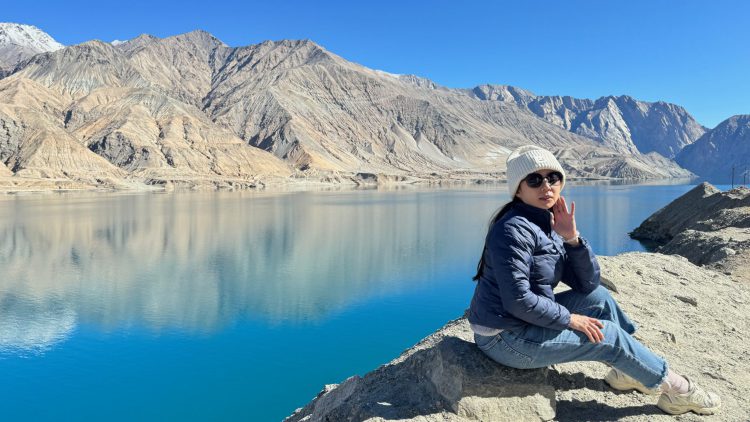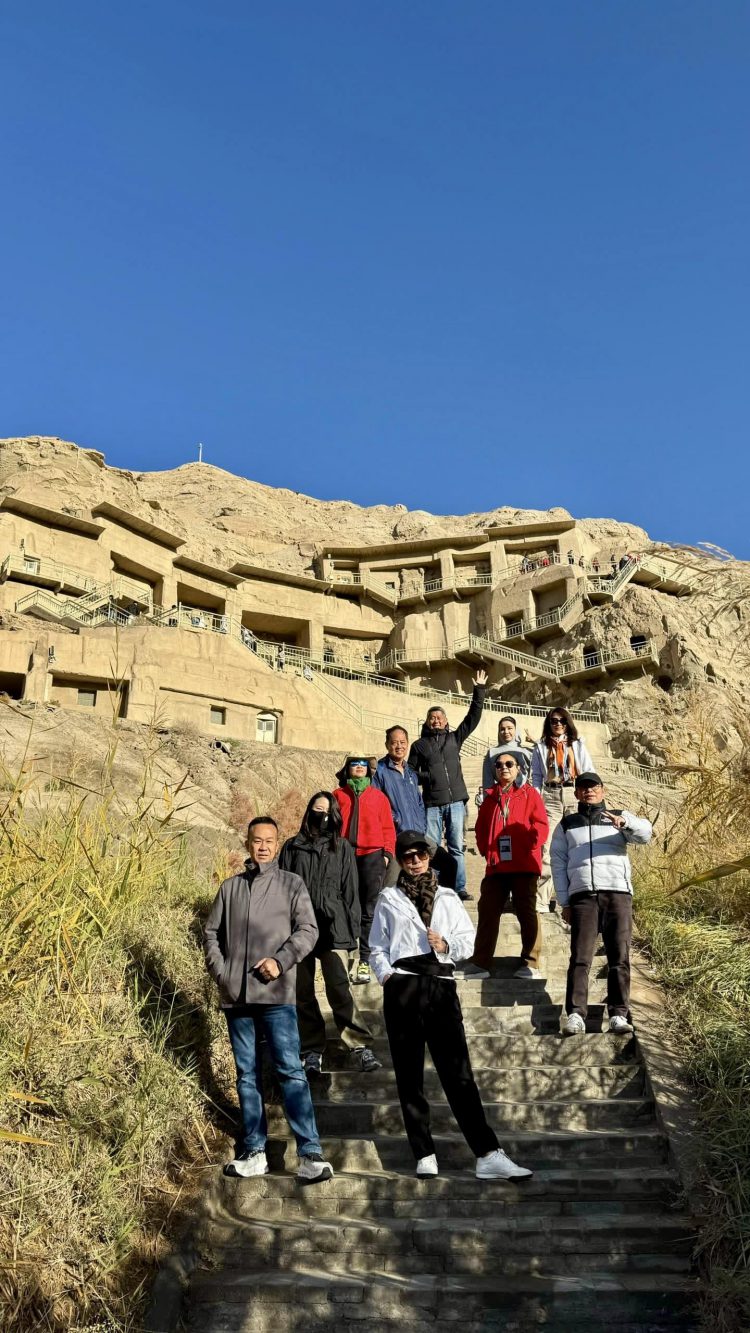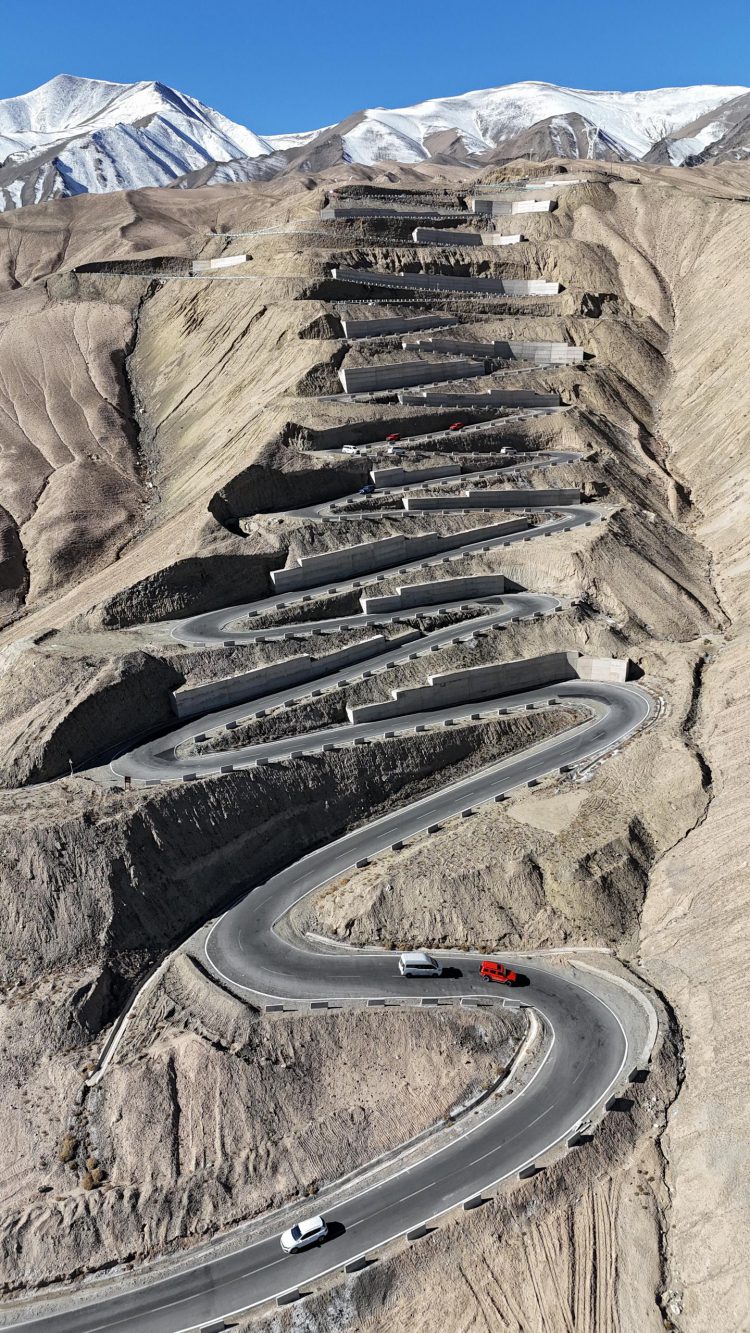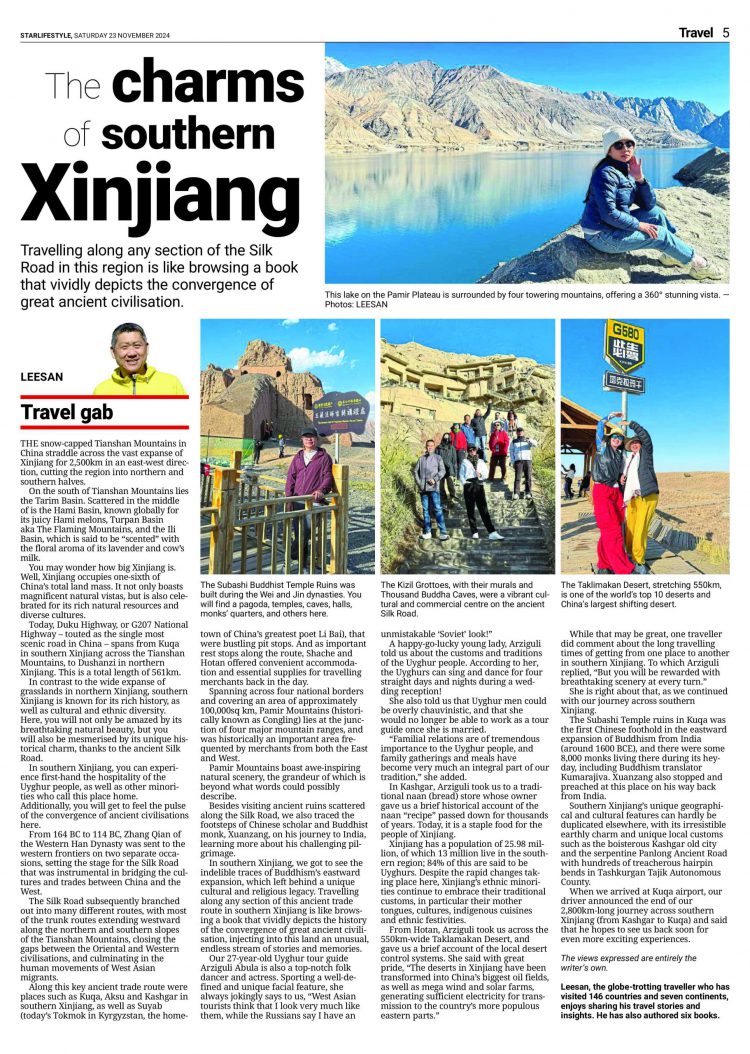The charms of southern Xinjiang – by leesan
Travelling along any section of the Silk road in this region is like browsing a book that vividly depicts the convergence of great ancient civilisation.
THE snow-capped Tianshan Mountains in China straddle across the vast expanse of Xinjiang for 2,500km in an east-west direc- tion, cutting the region into northern and southern halves.

This lake on the Pamir Plateau is surrounded by four towering mountains, offering a 360° stunning vista. —Photos: Leesan
On the south of Tianshan Mountains lies the Tarim Basin. Scattered in the middle of is the Hami Basin, known globally for its juicy Hami melons, Turpan Basin aka The Flaming Mountains, and the Ili Basin, which is said to be “scented” with the floral aroma of its lavender and cow’s milk. You may wonder how big Xinjiang is.
Well, Xinjiang occupies one-sixth of China’s total land mass. It not only boasts magnificent natural vistas, but is also celebrated for its rich natural resources and
diverse cultures.
Today, Duku Highway, or G207 National Highway – touted as the single most scenic road in China – spans from Kuqa in southern Xinjiang across the Tianshan Mountains, to Dushanzi in northern Xinjiang. This is a total length of 561km. In contrast to the wide expanse of grasslands in northern Xinjiang, southern Xinjiang is known for its rich history, as well as cultural and ethnic diversity. Here, you will not only be amazed by its breathtaking natural beauty, but you will also be mesmerised by its unique historical charm, thanks to the ancient Silk Road.
In southern Xinjiang, you can experience first-hand the hospitality of the Uyghur people, as well as other minorities who call this place home.
Additionally, you will get to feel the pulse of the convergence of ancient civilisations here.

The Subashi Buddhist temple ruins were built during the Wei and Jin dynasties. you will find a pagoda, temples, caves, halls, monks’ quarters, and others here.

The Kizil Grottoes, with their murals and thousand Buddha Caves, were a vibrant cultural and commercial centre on the ancient Silk road.
From 164 BC to 114 BC, Zhang Qian of the Western Han Dynasty was sent to the western frontiers on two separate occasions, setting the stage for the Silk Road that was instrumental in bridging the cultures and trades between China and the West.
The Silk Road subsequently branched out into many different routes, with most of the trunk routes extending westward along the northern and southern slopes of the Tianshan Mountains, closing the gaps between the Oriental and Western civilisations, and culminating in the human movements of West Asian migrants. Along this key ancient trade route were places such as Kuqa, Aksu and Kashgar in southern Xinjiang, as well as Suyab(today’s Tokmok in Kyrgyzstan, the hometown of China’s greatest poet Li Bai), that were bustling pit stops. And as important rest stops along the route, Shache and Hotan offered convenient accommodation and essential supplies for travelling merchants back in the day. Spanning across four national borders and covering an area of approximately 100,000sq km, Pamir Mountains (historically known as Congling) lies at the junction of four major mountain ranges, and was historically an important area frequented by merchants from both the East and West.
Pamir Mountains boast awe-inspiring natural scenery, the grandeur of which is beyond what words could possibly describe.
Besides visiting ancient ruins scattered along the Silk Road, we also traced the footsteps of Chinese scholar and Buddhist monk, Xuanzang, on his journey to India, learning more about his challenging pilgrimage. In southern Xinjiang, we got to see the indelible traces of Buddhism’s eastward expansion, which left behind a unique cultural and religious legacy. Travelling along any section of this ancient trade route in southern Xinjiang is like browsing a book that vividly depicts the history of the convergence of great ancient civilisation, injecting into this land an unusual, endless stream of stories and memories.

The Taklimakan desert, stretching 550km, is one of the world’s top 10 deserts and China’s largest shifting desert.
Our 27-year-old Uyghur tour guide Arziguli Abula is also a top-notch folk dancer and actress. Sporting a well-de- fined and unique facial feature, she always jokingly says to us, “West Asian tourists think that I look very much like the unmistakable ‘Soviet’ look!” A happy-go-lucky young lady, Arziguli, told us about the customs and traditions of the Uyghur people. According to her, the Uyghurs can sing and dance for four straight days and nights during a wedding reception! She also told us that Uyghur men could be overly chauvinistic, and that she would no longer be able to work as a tour guide once she is married.
“Familial relations are of tremendous importance to the Uyghur people, and family gatherings and meals have become very much an integral part of our tradition,” she added. In Kashgar, Arziguli took us to a traditional naan (bread) store whose owner gave us a brief historical account of the naan “recipe” passed down for thousands of years. Today, it is a staple food for the people of Xinjiang.
Xinjiang has a population of 25.98 million, of which 13 million live in the southern region; 84% of this are said to be Uyghurs. Despite the rapid changes taking place here, Xinjiang’s ethnic minorities continue to embrace their traditional customs, in particular their mother tongues, cultures, indigenous cuisines and ethnic festivities. From Hotan, Arziguli took us across the 550km-wide Taklamakan Desert, and gave us a brief account of the local desert control systems. She said with great pride, “The deserts in Xinjiang have been transformed into China’s biggest oil fields, as well as mega wind and solar farms, generating sufficient electricity for transmission to the country’s more populous eastern parts.”
While that may be great, one traveller did comment about the long travelling times of getting from one place to another in southern Xinjiang. To which Arziguli replied, “But you will be rewarded with breathtaking scenery at every turn.” She is right about that, as we continued with our journey across southern Xinjiang.
The Subashi Temple ruins in Kuqa was the first Chinese foothold in the eastward expansion of Buddhism from India(around 1600 BCE), and there were some 8,000 monks living there during its hey-day, including Buddhism translator Kumarajiva. Xuanzang also stopped and preached at this place on his way back from India. Southern Xinjiang’s unique geographical and cultural features can hardly be duplicated elsewhere, with its irresistible earthly charm and unique local customs such as the boisterous Kashgar old city and the serpentine Panlong Ancient Road with hundreds of treacherous hairpin bends in Tashkurgan Tajik Autonomous County.
When we arrived at Kuqa airport, our driver announced the end of our 2,800km-long journey across southern Xinjiang (from Kashgar to Kuqa) and said that he hopes to see us back soon for even more exciting experiences.

Published in The Star, 23 Nov 2024
全球超过80000家酒店,Apple101助您轻松订房,出行无忧,绝对优惠价。入住期间付款,多数客房可免费取消!











